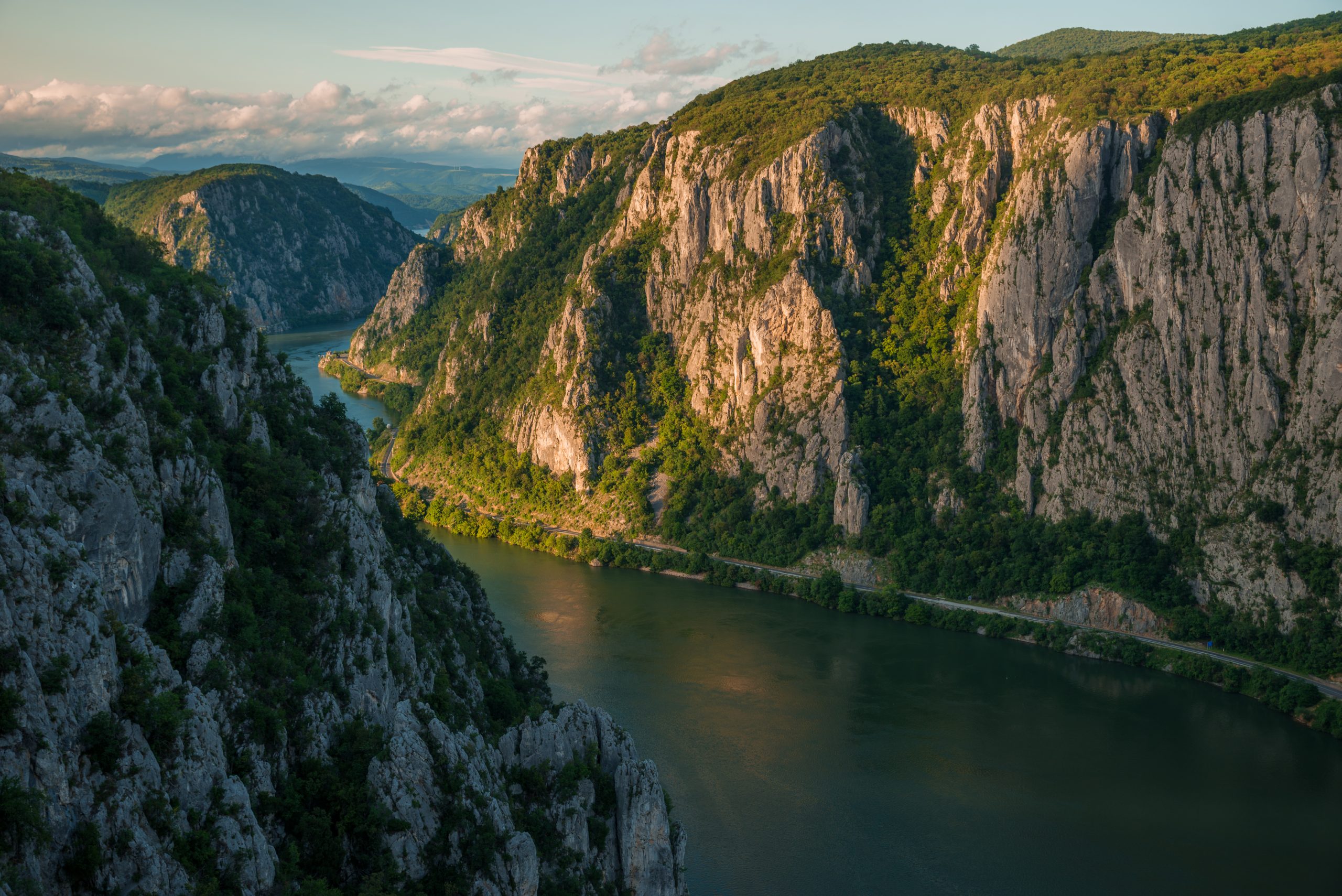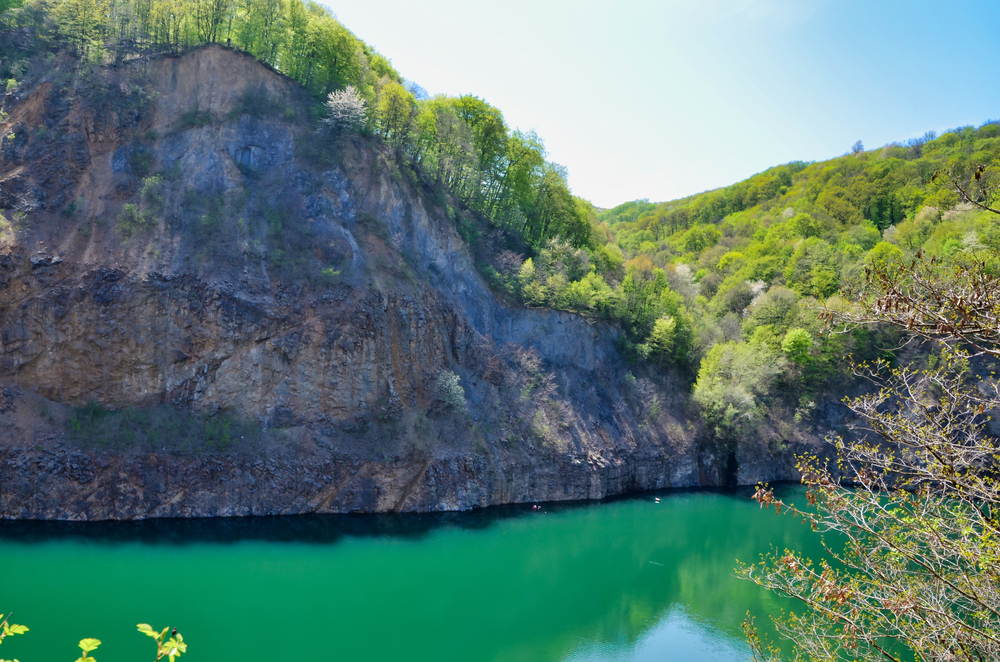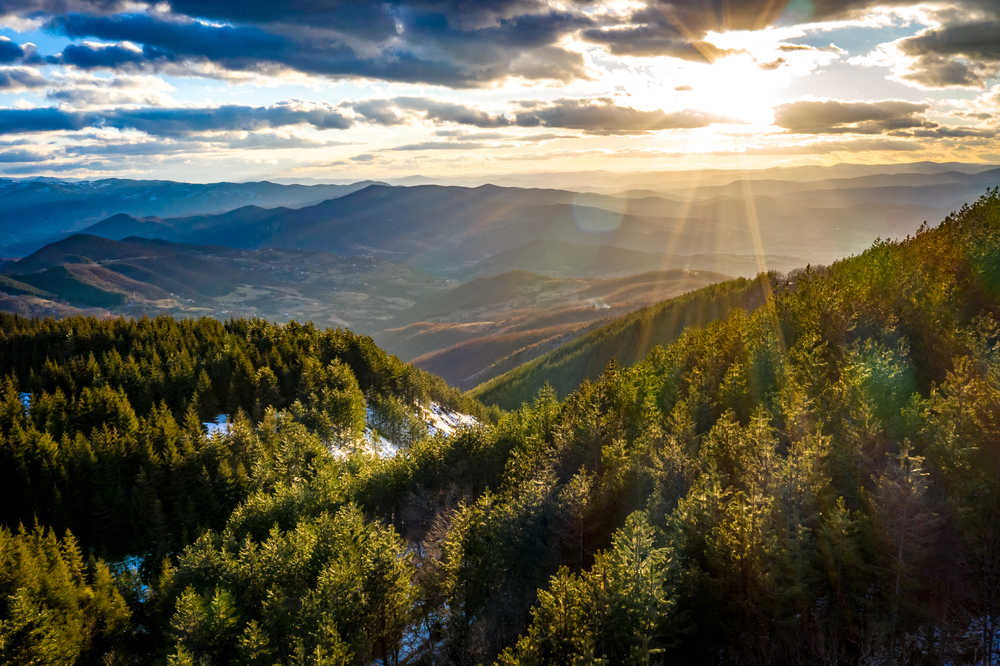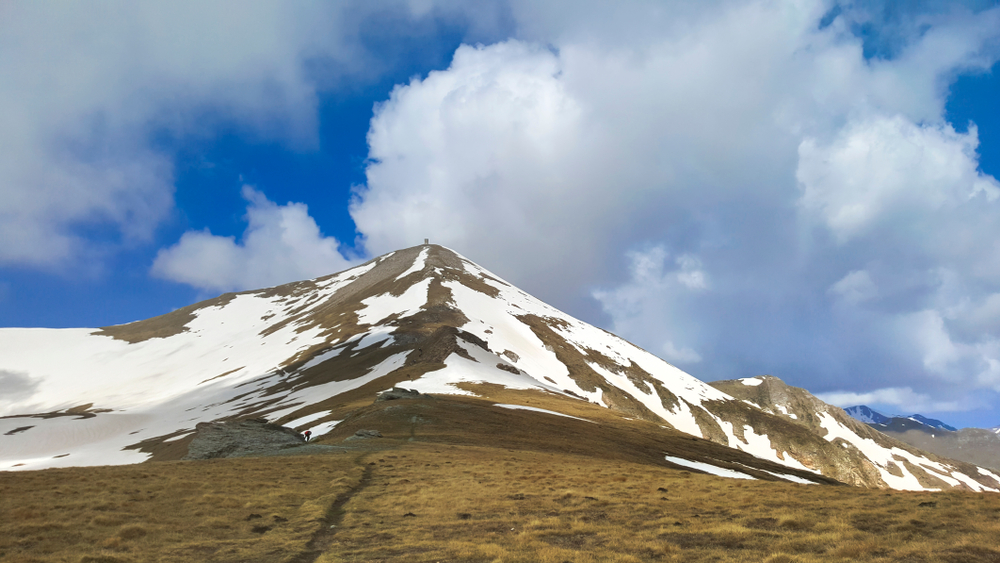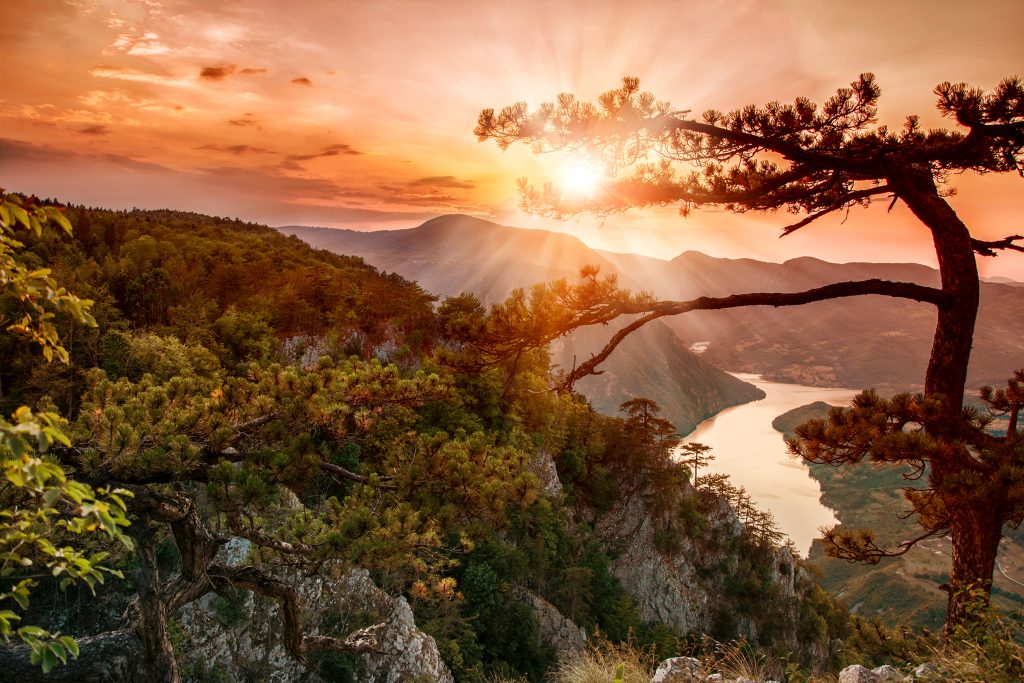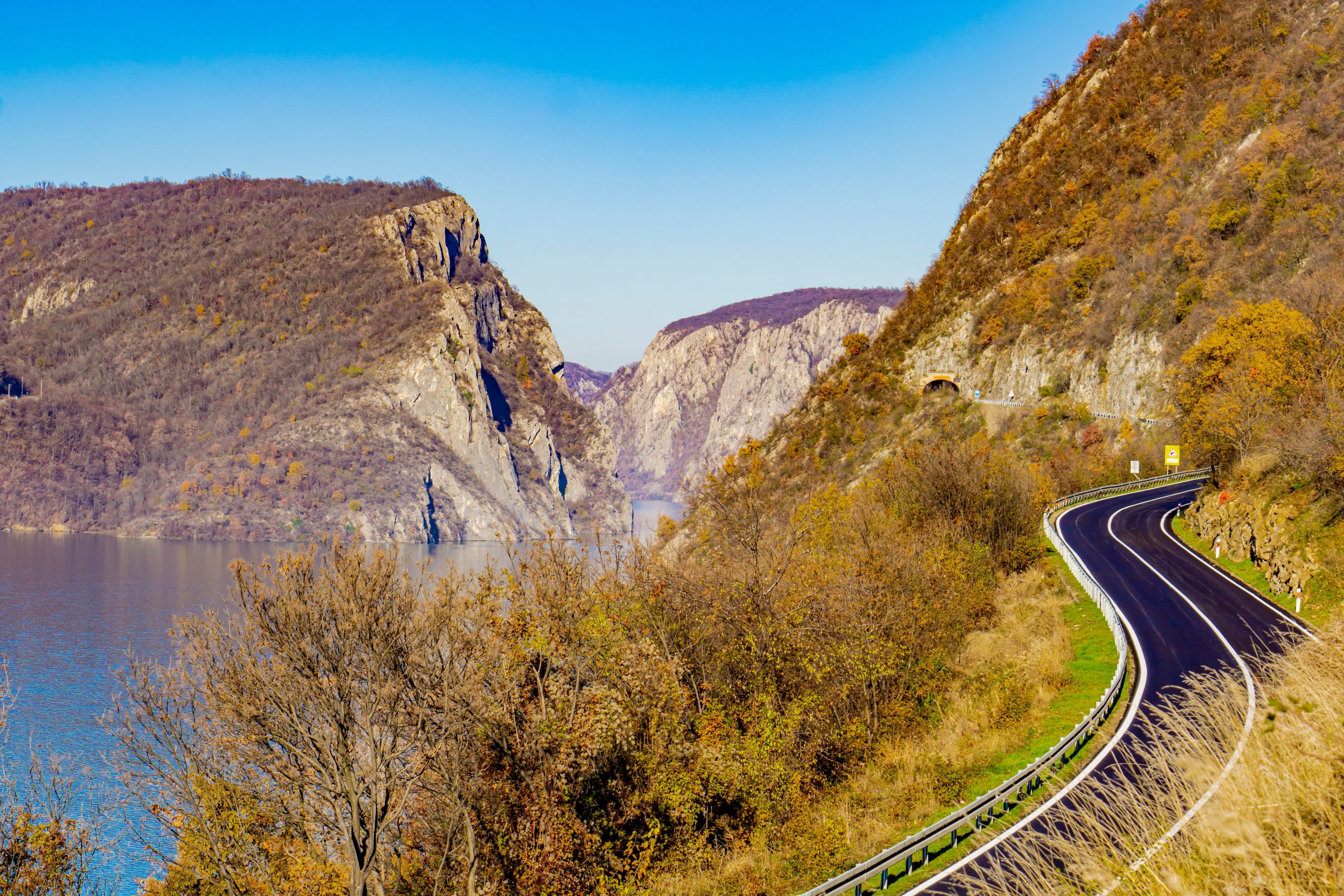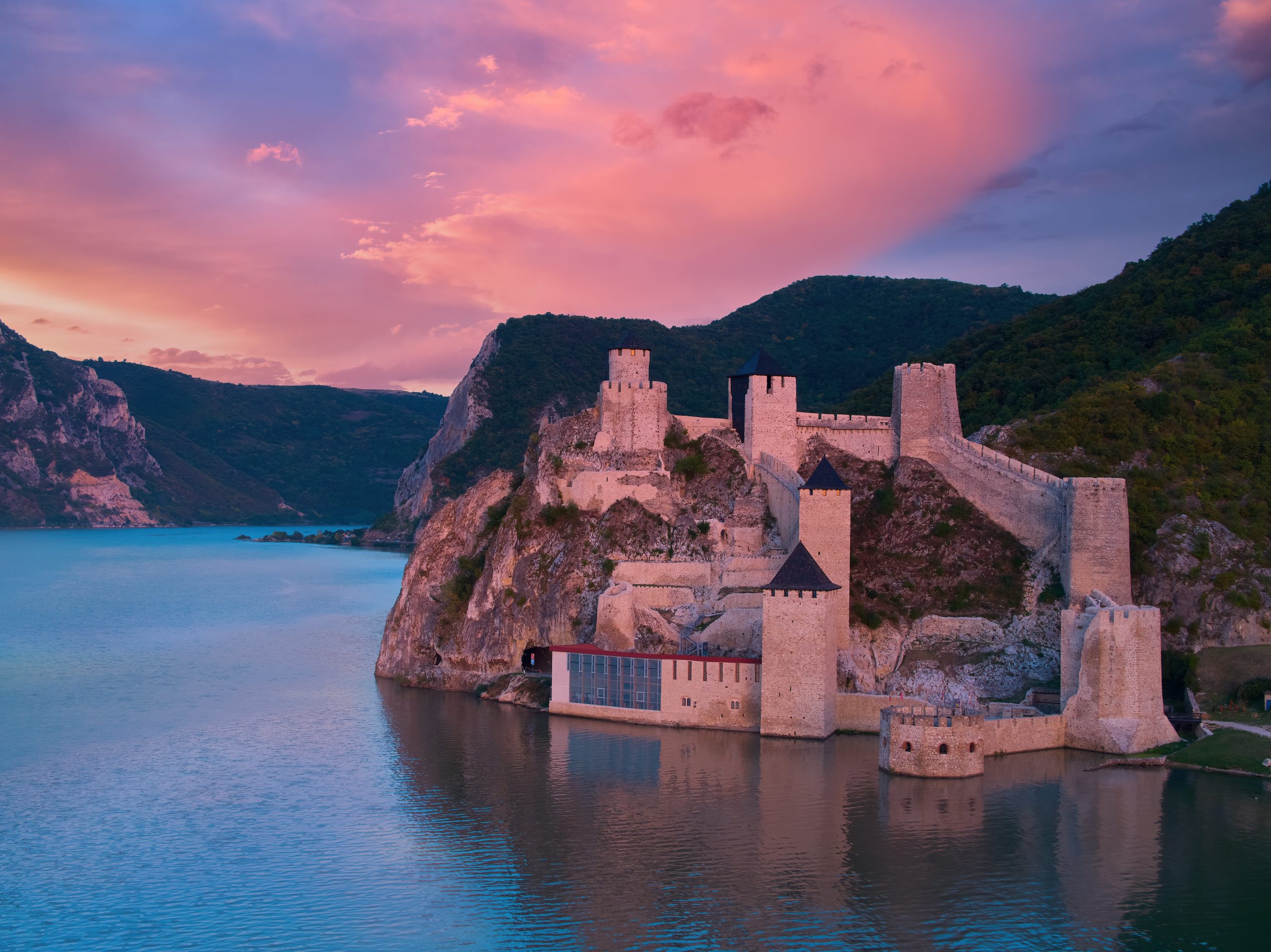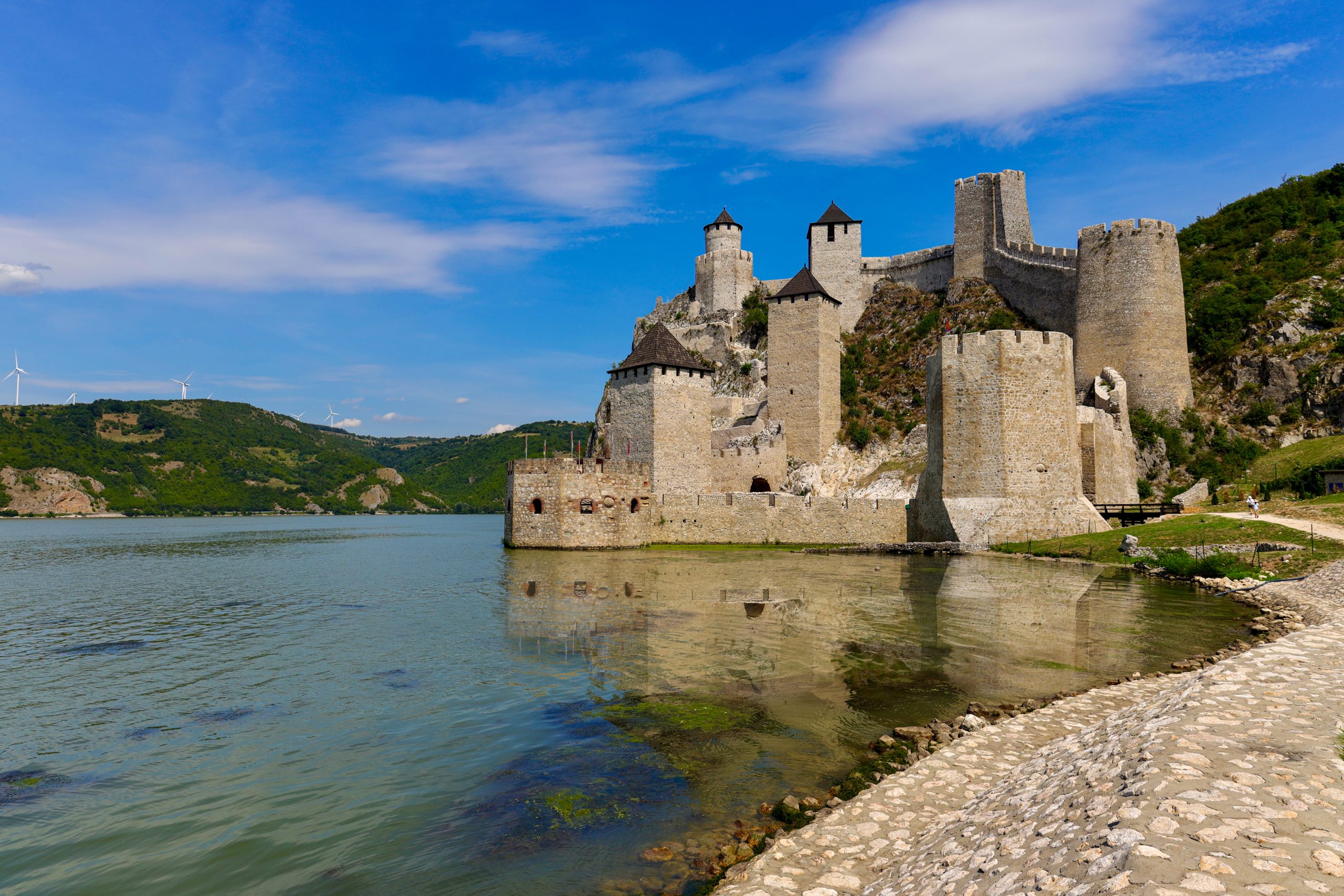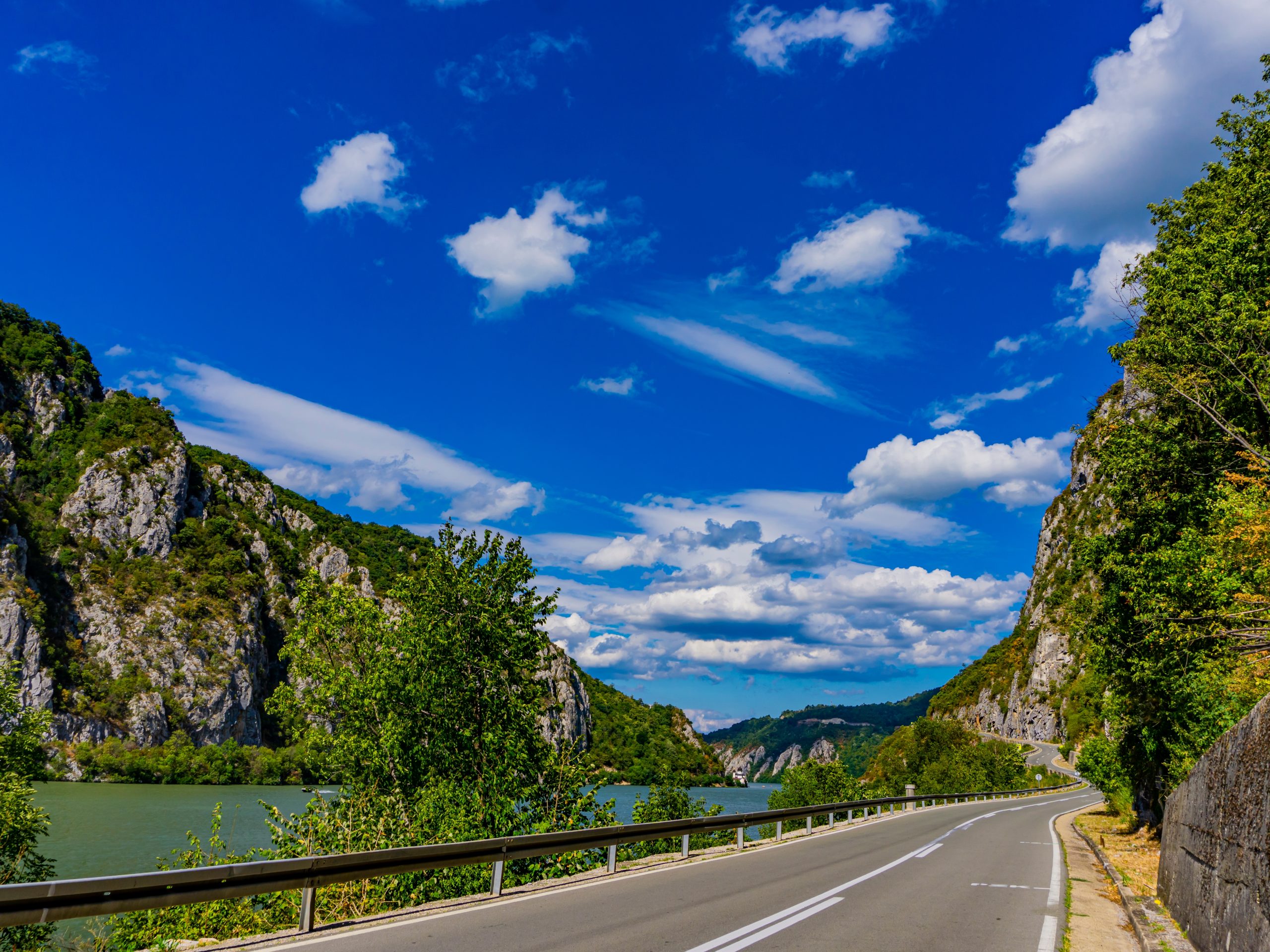Đjerdap Overview
Đjerdap National Park, known as Nacionalni park Đerdap in Serbian, is one of Serbia’s most breathtaking natural treasures. Covering an area of 248 square miles (640 square kilometers), the park stretches along the right bank of the Danube River in the northeastern part of the country, near the border with Romania.
The park encompasses the famous Đerdap Gorge, also called the Iron Gates, one of the largest and most spectacular river gorges in Europe. It offers visitors a captivating blend of dramatic landscapes, rich biodiversity, and historical significance.
The terrain of Đjerdap National Park is defined by the impressive Danube River, which carves through towering cliffs and steep forested hills, creating awe-inspiring scenery. The gorge itself consists of several sections, including Veliki Kazan and Mali Kazan, where the river narrows dramatically, flanked by sheer limestone cliffs that rise over 2,000 feet (600 meters) above the water.
The park is also home to Mount Miroč and Mount Štrbac, which offer panoramic views of the river and surrounding landscapes. Dense forests of oak, beech, and hornbeam cover much of the park, providing a lush green backdrop interspersed with meadows and rocky outcrops.
Wildlife thrives within Đjerdap National Park, offering visitors the chance to observe a variety of species. Mammals such as red deer, roe deer, wild boar, and European badgers roam the forests, while the elusive Eurasian lynx is a highlight for wildlife enthusiasts.
The park is also a paradise for birdwatchers, with over 150 species recorded, including golden eagles, white-tailed eagles, and peregrine falcons that nest along the cliffs. The Danube itself supports an array of aquatic life, including fish species like sturgeon, catfish, and carp, which are integral to the local ecosystem.
Đjerdap National Park is celebrated not only for its natural beauty but also for its historical and cultural landmarks. One of the most popular features is the Lepenski Vir archaeological site, a prehistoric settlement dating back to 9500 BCE, which provides insight into some of Europe’s earliest human communities.
Visitors are also drawn to the remnants of medieval fortresses like Golubac Fortress, located at the entrance to the gorge, which stands as a testament to the region’s strategic importance throughout history.
Exploring the park can be done in various ways, ensuring an immersive experience for every visitor. Hiking trails wind through the forests and up to the viewpoints, offering opportunities to soak in the scenery.
Boat tours on the Danube provide a unique perspective of the gorge and its towering cliffs, while cycling paths cater to outdoor enthusiasts seeking a more active adventure. For history lovers, guided tours of the archaeological and historical sites add depth to their visit.
Conservation is a significant focus in Đjerdap National Park, with efforts to protect its diverse flora and fauna, manage tourism sustainably, and preserve its cultural heritage. Challenges include combating illegal logging and ensuring the balance between development and preservation.
However, the park’s management has seen notable successes in habitat restoration and species protection, making it a model for sustainable conservation in the region.
Park Map
Đjerdap National Park Highlights
Engaging Djerdap National Park
Related National Parks More Serbia
Sources
- Danube Parks, Djerdap National Park, https://danubeparks.org/members/national-park-djerdap, retrieved August 2024.
- Explore Servia, Djerdap National Park, https://explore-serbia.rs/en/best-of-djerdap-national-park/, retrieved August 2024.
- Park Site, https://npdjerdap.rs/en/about-the-park/, retrieved August 2024.
- UNESCO, Djerdap National Park, https://whc.unesco.org/en/tentativelists/1693/, retrieved August 2024.
- Wikipedia, Derdap National Park, https://en.wikipedia.org/wiki/%C4%90erdap_National_Park, retrieved August 2024.








































































